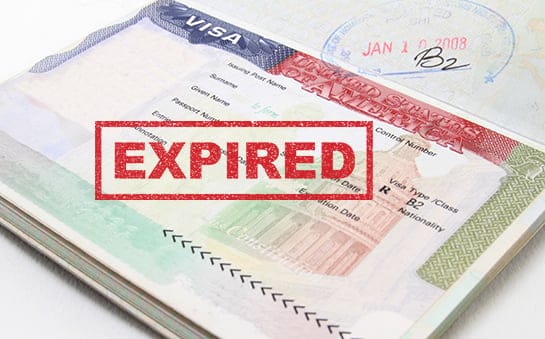
On April 22, 2019, the White House issued a “Presidential Memorandum on Combating High Nonimmigrant Overstay Rates,” aiming to curb the number of people who enter the United States with valid visas but then remain in the country (“overstay”) after those visas have expired. The president directed the Department of State and the Department of Homeland Security (DHS) to take the following actions:
- “Immediately begin taking all appropriate actions” to reduce overstay rates for all types of temporary visas. (It is unclear what such actions are likely to be.)
- Within 4 months, provide recommendations to the president to reduce overstay rates specifically for visitor visas used by business travelers (B-1) and tourists (B-2), but only for countries where the B-1/B-2 overstay rate is greater than 10%. Such actions could include “suspending or limiting entry” of business travelers and tourists from these countries—in other words, a travel ban.
- Within 6 months, provide recommendations to the president to reduce overstays from countries in the Visa Waiver Program, which allows citizens of certain countries to visit without a visa for up to 90 days.
- Develop new measures for “imposing admission bonds” as a way to disincentive visa overstays.
Which Countries Will Be Affected?
While many of the above directives are vaguely worded, and no country is mentioned by name, it’s clear who’s being targeted for a possible visitor visa ban: Only those countries with an “overstay rate” greater than 10%, as recorded in the latest DHS overstay report.
Only 20 countries are above that threshold:
Share this graphic:
Why This Makes No Sense, Part 1: Suspicious Targeting
If you take a close look at the chart above, you may notice something curious about the 20 targeted countries: Except for Nigeria, none of them are sending more than a handful of visitors to the United States who ultimately overstay their visas.
These countries do have one thing in common: None of them are in Europe. And most of them are in Africa.
Share this graphic:
The presidential memo, in its own words, seeks to address the “large numbers of aliens” who overstay, allegedly placing “significant strain on [government] resources, which are currently needed to address the national emergency on our southern border.”
Yet the 20 targeted countries (in red above) account for only 7% of visitor visa overstays.
The top 20 countries by overstay volume, on the other hand, account for 76% of visitor visa overstays. If the Trump administration were serious about addressing “large numbers of aliens,” presumably it would focus its resources on these countries instead (in blue above).
It’s hard to escape the conclusion that the administration has created a discriminatory benchmark that would focus primarily on people from countries in Africa, rather than addressing the overwhelming majority of visa overstays that originate in other countries.
Why This Makes No Sense, Part 2: Suspicious Data
Not only does the overstay order target the wrong countries, it’s based on questionable data to begin with.
Based on the government’s own data, last year DHS could confirm that 99.24% of international visitors had either “departed the United States on time and in accordance with the terms of their admission,” or had left within the next 6 months.
If a 0.76% overstay rate sounds high to you, don’t worry—the real number is probably much lower. According to respected demographic work from the nonpartisan Center for Migration Studies, DHS has overcounted overstays by more than 50%, and therefore its estimates “do not provide a sound basis for making decisions” about immigration policy.
Take Canada. According to DHS, in 2017 there were nearly 120,000 people who legally entered the United States from Canada by air or by sea and then overstayed. But based on Census data analyzed by the Center for Migration Studies, the real number is approximately 900. Just because DHS fails to record a person’s departure doesn’t mean they never went home.
In fact, DHS is far more likely to overestimate visa overstays than underestimate them:
Share this graphic:
Boundless will continue to monitor this presidential order and its consequences. To stay up to date on changes throughout the U.S. immigration system, follow Boundless on Twitter or Facebook.